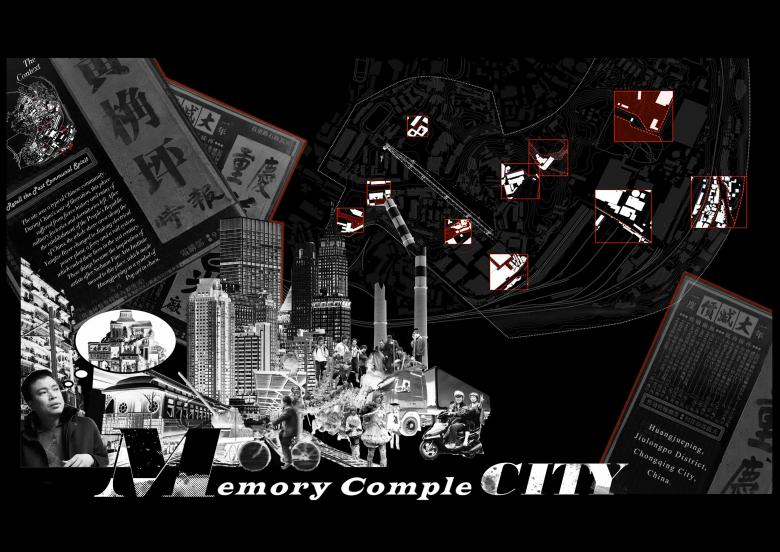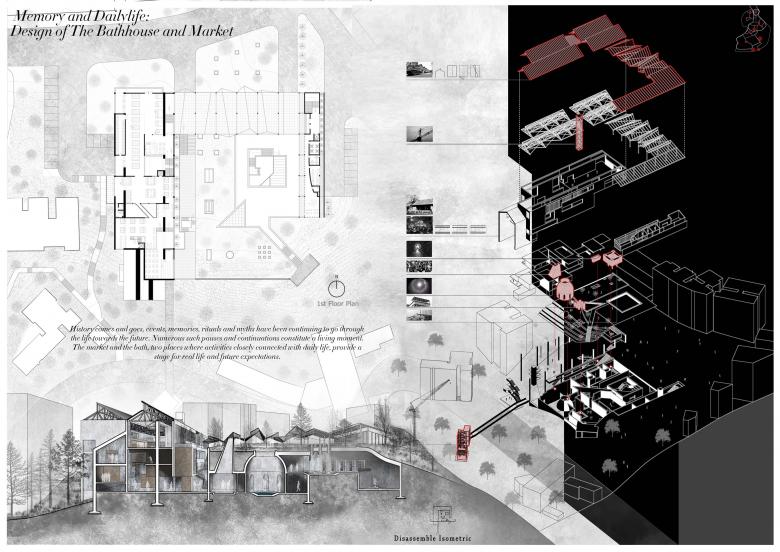

Memory Complecity
Back to Projects listMore Than Just Memory: A Network to Retell the Past Communal Spirit
To recover the potential value of what happened in the past, we use architectures and landscapes to bring historical events to daily life, dredge the isolated condition as a result of topography, and form a new network of public space.
Huangjueping was a typical Chinese community in history,which is developed from a temple called Wulong. During China’s war of liberation and the Cultural Revolution, this place suffered from fierce history and what left today are the ruins of that period’s military factories and dormitories. While after the establishment of the People’s Republic of China, the whole shore area along the Yangtze River was filled with an electrical power plant, a ferry and a rail system, which all ended their lives in the 21st century.The special aesthetic of these abandoned things became the inspiration of artists after Sichuan Fine Arts Institute moved to this place, which made Huangjueping become a symbol of Pop art.
As the arts institute is moving away and the Jiulong electrical power plant is about to be deconstructed, Huangjueping starts to losing its symbol and spirit. Started from a research, we decided to choose the history timeline as our entry point, try to reconstruct the communal spirit of this area to activate the whole site. Based on Aldo Rossi’s typology theory, Tschumi’s movement-events-space montage system and the study of Jung’s synchronicity, the historical events were partly given the connection with the space they commenced, the form of these spaces could be extracted directly and become a node on this site, while the others were spatially translated into contemporary syntaxes and reorganized into a new system for current utilization circumstance. Huangjueping is separated into three parts by its topography and made them difficult to communicate with each other. We picked 10 nodes (contain plaza, residential community, retail shops, landfill center, library, pier, etc.) and analyzed the spatial issue, then use the typologies of the historical architecture to connect the daily life to the events happened on those areas to create new urban scenes with the past memory. The bathing house and market on the north reflected the old military factory and binding it with the residents’ daily lives. The library used a radical form language to discuss the poetic light-shadow and daily utilization, while the pier-museum provided a clear narrative routine to experience the historical timeline of the past. After these manipulations, those nodes started to influence the nearby space and formed a spatial network of the whole site. This thesis is an architectural practice to provide a chance to create an urban system to connect the present to the past, a memory trigger for domestic residents, a monument for daily use.




